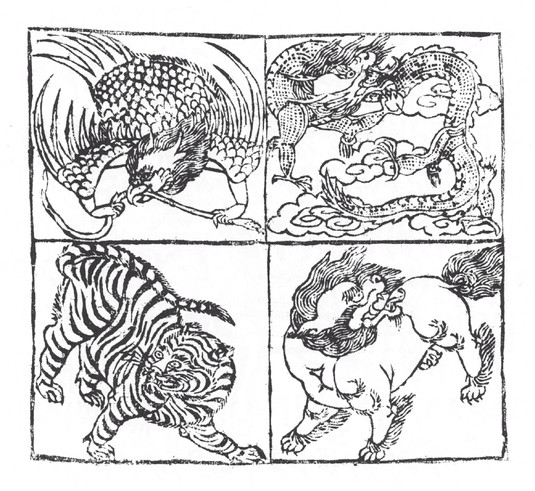4 Religious Symbols Commonly Used on Tibetan Artwork
Tibetan Buddhist themes and symbols are expressions of the teachings and practices of Buddhism in Tibet. They are often used in art, literature, ritual, meditation, and daily life to convey spiritual meanings and values. Tibetan Buddhist themes and symbols include:
- The Eight Auspicious Symbols: These are eight objects that represent good fortune, protection, harmony, and enlightenment. They are: the parasol (protection from harm), the golden fish (abundance and freedom), the treasure vase (wealth and prosperity), the lotus flower (purity and wisdom), the conch shell (authority and power), the endless knot (interdependence and compassion), the victory banner (triumph over obstacles), and the wheel of Dharma (teaching and learning of Buddhism)
- The Four Dignities: These are four animals that symbolize qualities of a Buddhist practitioner. They are: the dragon (powerful energy and creativity), the tiger (confidence and discipline), the snow lion (joyful courage and fearlessness), and the garuda (wisdom and freedom from ignorance)

- Prayer Flags: These are colorful pieces of cloth that are printed with prayers, mantras, images, or symbols. They are hung on poles or ropes in high places where they can catch the wind. The wind is believed to carry the blessings of the prayers to all beings. Prayer flags come in five colors that represent five elements: blue for sky or space, white for air or wind, red for fire , green for water ,and yellow for earth .
- Mani Wheels: These are cylindrical devices that contain rolls of paper with mantras written on them. They are usually placed near temples ,monasteries ,or roadsides .They can be turned by hand ,wind ,water ,or electricity .Each turn is equivalent to reciting the mantra aloud.The most common mantra is Om Mani Padme Hum ,which means "Hail to the jewel in the lotus" .It is a praise to Avalokiteshvara ,the bodhisattva of compassion .
Which One do you like?
